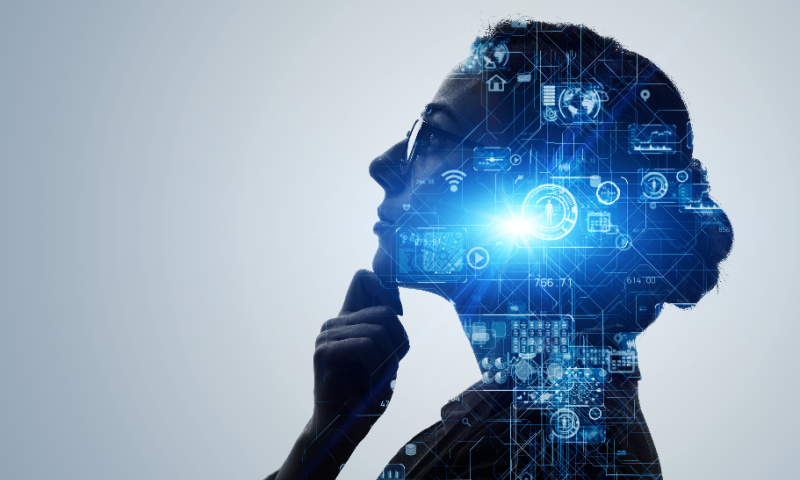Digital progress has revolutionized the way we live and work. The digital age has brought many technological advancements that have transformed the world, from how we communicate and access information to how we make purchases and manage our finances. Digital progress has profoundly affected nearly every aspect of our lives.
One of the key drivers of digital progress is the growth of the internet. Another driver is the widespread availability of high-speed connections. It has enabled the rapid growth of online commerce, social media, and other digital services. These platforms have changed how we interact with each other and the world around us. The growth of the internet has also paved the way for developing new technologies. Artificial intelligence and machine learning can transform the world in ways we can only imagine.
Another critical factor driving digital progress is the proliferation of mobile devices. They have made it possible for people to access information and connect with others from anywhere at any time.
Yet, digital progress has come with challenges. As we become more dependent on technology, the risk of cyber attacks, data breaches, and other security threats has increased.
Besides, the rapid pace of digital change has created new ethical, health, and social challenges. One of the most critical is the impact of artificial intelligence on cognitive abilities. With all these advancements, a valid question arises: is technology making us smarter or dumber?
Understanding artificial intelligence
Artificial intelligence (AI) has been a topic of interest and research since the 1950s. In recent years, AI has advanced and changed how we live, work and communicate. Researchers aim to develop computer systems that perform tasks that need human intelligence. These tasks include visual perception, speech recognition, decision-making, and language translation.
One of the most significant developments in AI is machine learning. It allows computers to learn from data, identify patterns, and make predictions without explicit programming.
AI can recognize images, speech, and even emotions. Companies use AI in various industries, including healthcare, finance, and marketing. They use it to improve efficiency, accuracy, and speed.
AI and Natural Language Processing
Another significant development in AI is Natural Language Processing (NLP). It is a subfield of computer science and artificial intelligence. It is concerned with the interactions between computers and humans using natural language. NLP deals with analyzing, understanding, and generating human speech. It allows computers to interact with humans in a more human-like way. NLP involves text classification, emotion recognition, machine translation, and question-answering systems. It is crucial in enabling computers to understand and process vast amounts of text data. NLP is essential for information retrieval, speech recognition, and machine learning.
AI revolutionizing industries
Some worry that AI will displace human workers and reduce employment opportunities. Yet, technology has disrupted the job market for centuries. But AI will likely create new jobs and industries. Workers who develop, maintain, and manage AI systems, and those who provide ethical guidance and regulation for AI use, will be in high demand.
AI has the potential to transform healthcare, education, and transportation. In healthcare, AI can analyze medical images, diagnose, and identify patterns in patient data. Or it can even develop personalized treatment plans. AI can provide customized learning experiences in education. It can also provide customized feedback and guidance. In transportation, AI can develop self-driving cars, reducing car accidents. It also can improve road safety and reduce traffic congestion.
Despite its several benefits, the impact of AI and digital progress on brain performance is a valid concern.
The effects of digital progress on brain performance
The digital age has brought many advancements and conveniences to our daily lives. Still, it has also raised questions about the impact of technology on our brain performance. There is constant use of smartphones, computers, and other digital devices. But it’s essential to understand how these advancements affect our cognitive abilities and well-being and how they can transform our daily life.
The bright side
On the positive side, digital technology has improved our ability to process and access information. It allows us to expand our understanding of various topics and make informed decisions. With a few clicks, we can access vast amounts of data and knowledge from around the world.
Another positive effect of digital progress is that it has led to the development of new and innovative technologies. These technologies are designed to enhance brain performance. For example, brain-computer interfaces enable users to control devices with their thoughts. It could lead to breakthroughs in medicine, education, and entertainment. Also, virtual and augmented reality technologies could revolutionize how we learn and interact with the world. It provides us with new and exciting opportunities to explore and engage with the world around us.
Additionally, digital devices have made communication more accessible and efficient. They allow us to stay connected with friends and family no matter where we are.
Using instant messaging, email, video conferencing, and social media platforms have made exchanging information easier and faster. Digital devices have also made it possible to reach a wider audience through online communication. It has broken down traditional barriers and enabled people to connect with others.
Technology drawbacks
Yet, excessive use of digital technology has also been linked to several adverse effects on brain performance. There is a constant distraction of notifications and a pressure always to be connected. It can negatively impact our ability to concentrate and focus. This continuous exposure to technology is also linked to decreased sleep quality. The blue light emitted from screens can disrupt circadian rhythms.
Furthermore, digital devices can negatively impact our social skills and emotional intelligence. With increasing reliance on technology for communication, face-to-face interactions have become less frequent. It reduces the opportunities for individuals to develop critical social skills. Empathy, emotional intelligence, and conflict resolution are among those social skills.
Finally, the overuse of technology is connected to a decline in critical thinking skills. We are under constant assault by information and easy access to misinformation online. It is becoming difficult to distinguish between credible and non-credible sources. Misinformation online leads to a decreased ability to analyze data and check arguments. These are essential critical thinking skills.
In light of these adverse effects, individuals must adopt healthy technology habits. They also need to strike a balance between the benefits and drawbacks of digital technology. Setting limits on screen time might be a good idea. Also, engaging in activities that promote face-to-face interactions can reduce the adverse effects on brain performance and promote well-being.
It’s also crucial for schools and other educational institutions to incorporate digital literacy education into their curricula. It will help equip the students with the skills necessary to navigate the digital world. They will be able to make the most of technology’s benefits while avoiding its pitfalls. In this digital era, you may wonder about education vs skills which one is better.
In conclusion, the impact of digital progress on brain performance is a subject of ongoing research and debate. Technology has the potential to improve cognitive abilities through increased access to information and new forms of stimulation. Still, excessive use and reliance on digital devices can also lead to adverse effects such as decreased attention span, decreased ability to focus and remember information, and reduced creativity. Thus, it is vital to strike a balance and use technology responsibly to maximize its benefits and cut its drawbacks.


 Home
Home









